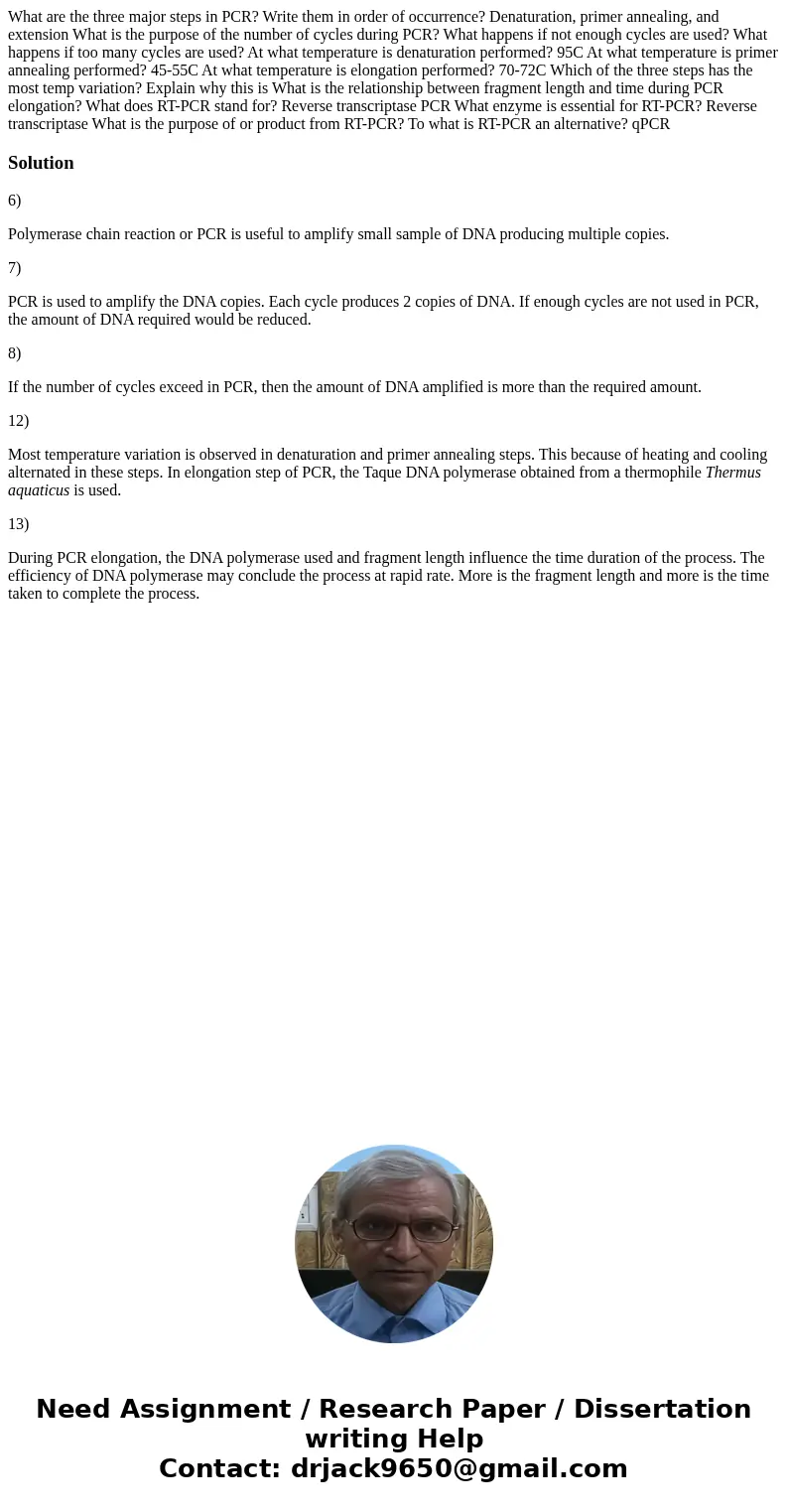What are the three major steps in PCR Write them in order of
Solution
6)
Polymerase chain reaction or PCR is useful to amplify small sample of DNA producing multiple copies.
7)
PCR is used to amplify the DNA copies. Each cycle produces 2 copies of DNA. If enough cycles are not used in PCR, the amount of DNA required would be reduced.
8)
If the number of cycles exceed in PCR, then the amount of DNA amplified is more than the required amount.
12)
Most temperature variation is observed in denaturation and primer annealing steps. This because of heating and cooling alternated in these steps. In elongation step of PCR, the Taque DNA polymerase obtained from a thermophile Thermus aquaticus is used.
13)
During PCR elongation, the DNA polymerase used and fragment length influence the time duration of the process. The efficiency of DNA polymerase may conclude the process at rapid rate. More is the fragment length and more is the time taken to complete the process.

 Homework Sourse
Homework Sourse